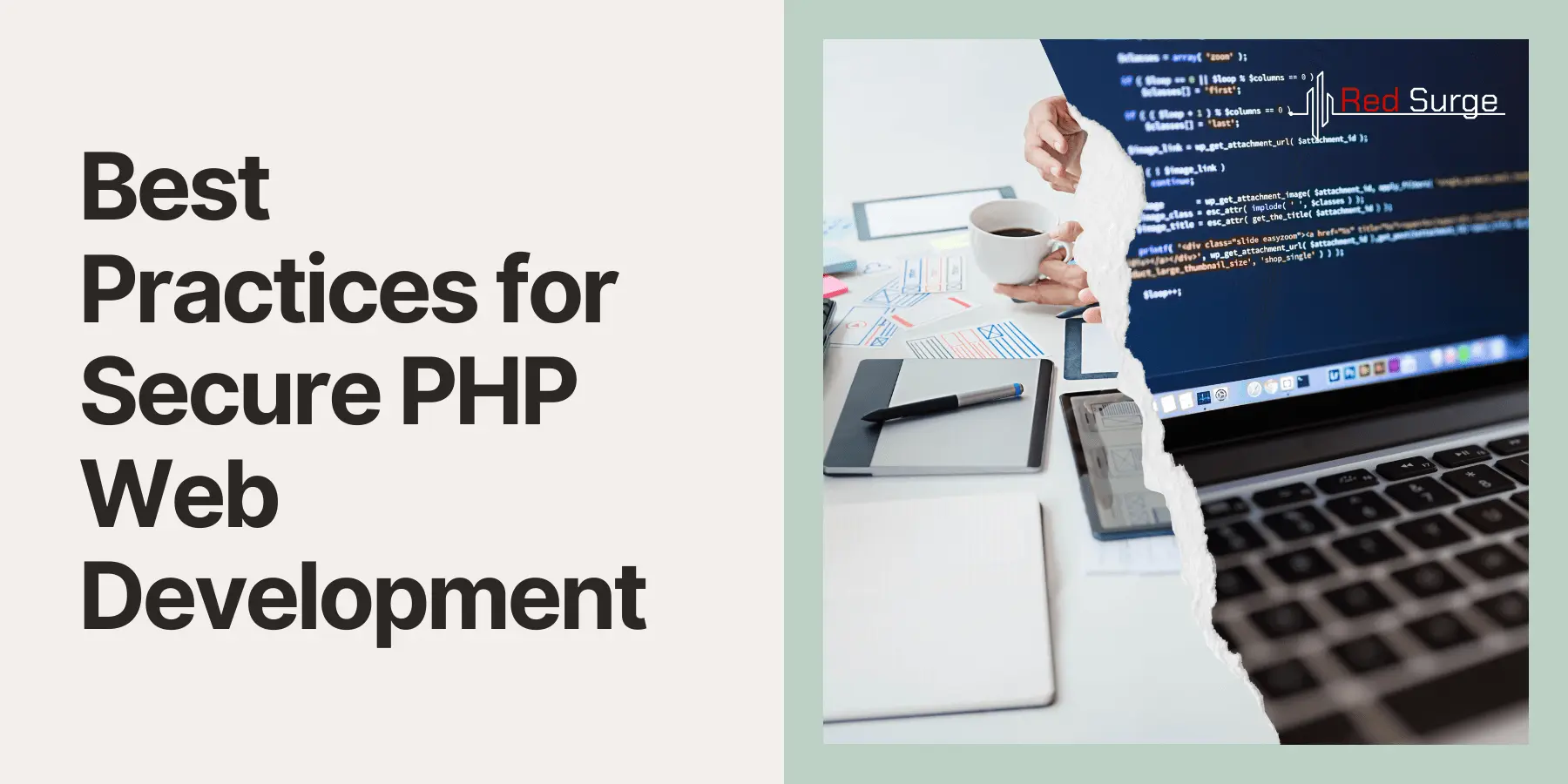Web application security is of utmost importance in the digital age, as cyber threats continue to grow in sophistication and frequency. As a PHP developer, implementing robust security measures is essential to protect user data and maintain the integrity of your web applications. In this comprehensive blog post, we will delve into the best practices for secure PHP web development. By following these guidelines, you can bolster the security of your PHP applications and safeguard against potential vulnerabilities.
1. Validate User Input Thoroughly
The first line of defense against common security threats, such as SQL injection and cross-site scripting (XSS), is to validate user input rigorously. Always assume that users will attempt to inject malicious code into your application and implement both client-side and server-side validation. Utilize PHP’s built-in validation functions like filter_var() or custom validation functions to ensure data integrity.
When validating user input, adopt a whitelist approach, allowing only specific characters or patterns that are required for each input field. Avoid blacklisting, as it can lead to bypassing security checks with different variations of malicious input.
2. Use Prepared Statements and Parameterized Queries
To prevent SQL injection attacks, utilize prepared statements and parameterized queries when interacting with databases. A prepared statement separates the SQL logic from the user input, ensuring that user-provided data is never directly executed as part of the query.
In contrast to traditional SQL queries, prepared statements bind parameters separately, making it impossible for attackers to manipulate the query structure. PHP frameworks like PDO (PHP Data Objects) and MySQLi provide robust support for prepared statements.
3. Keep PHP and Related Libraries Updated
Outdated PHP versions and libraries are more susceptible to security vulnerabilities. Stay up-to-date with the latest stable versions of PHP and related libraries to benefit from the latest security patches and bug fixes.
Frequent security updates are essential because attackers actively scan for outdated software and exploit known vulnerabilities. Regularly check the PHP.net website and security advisories to ensure you are aware of any security-related updates.
4. Secure File Uploads
File upload functionality poses significant security risks if not appropriately managed. Implement stringent security measures to validate and sanitize file uploads to prevent malicious files from being uploaded to your server.
Restrict the allowed file types based on application requirements and use server-side validation to ensure that uploaded files meet security criteria. Store uploaded files outside the web root directory or leverage access controls to prevent direct access to them.
5. Escape Output Data
Cross-site scripting (XSS) attacks are a prevalent threat that can compromise user data and hijack sessions. To defend against XSS attacks, it is essential to escape output data displayed on web pages.
PHP provides functions like htmlspecialchars() and htmlentities() to convert special characters into their HTML entities, making it impossible for browsers to interpret them as code. Implement this security measure consistently to protect against potential XSS vulnerabilities.
6. Implement Proper Authentication and Authorization
Authentication and authorization are crucial aspects of web application security. Implement robust authentication mechanisms, such as password hashing and encryption, to protect user credentials.
Avoid using weak password storage methods like MD5 or SHA-1, as they are susceptible to brute-force attacks. Instead, utilize PHP’s password_hash() function with a strong hashing algorithm, such as bcrypt or Argon2, to securely hash user passwords.
7. Protect Sensitive Data
Securely handle sensitive data, such as passwords, API keys, and access tokens, to minimize the risk of data breaches. Avoid storing sensitive information in plain text within configuration files or source code.
Use encryption techniques to protect sensitive data when at rest or in transit. Utilize PHP’s openssl extension or third-party libraries like Libsodium to implement robust encryption and decryption mechanisms.
8. Use HTTPS for Secure Communication
Secure Socket Layer (SSL) or Transport Layer Security (TLS) encryption is crucial for securing data transmitted between the web server and the user’s browser. Implement HTTPS across your entire web application to prevent man-in-the-middle attacks and ensure data confidentiality.
When it comes to best practices for secure PHP web development you should obtain an SSL certificate from a trusted certificate authority and configure your web server to support HTTPS. This not only improves security but also enhances your site’s credibility with users and search engines.
9. Sanitize URLs and Avoid Exposing Sensitive Information
URL parameters can be manipulated by attackers to perform various attacks, including SQL injection and directory traversal. Sanitize and validate all URL parameters to ensure they comply with the expected format and do not contain malicious content.
Avoid exposing sensitive information, such as database credentials or internal file paths, in URLs. Keep URLs concise and descriptive without revealing implementation details.
10. Disable Error Reporting for Production Environments
PHP error messages can expose sensitive information about your application, making it easier for attackers to identify potential vulnerabilities. In production environments, disable the display of PHP errors and notices to maintain a secure application.
Set display_errors to Off and log PHP errors to a secure location for later review and debugging. This approach ensures that error information is available for troubleshooting without compromising application security.
11. Implement Role-Based Access Control (RBAC)
Role-Based Access Control (RBAC) enables you to manage user permissions effectively. Assign roles and associated access rights to users based on their responsibilities within the application.
By adopting RBAC, you limit user privileges to the minimum required for their tasks, reducing the potential impact of security breaches caused by compromised user accounts.
12. Monitor and Log Events
Implement comprehensive logging mechanisms to monitor user activities and detect potential security breaches. Regularly review logs for suspicious activities and take necessary actions when anomalies are detected.
Log key events, such as login attempts, failed authentication, and critical system operations, to aid in incident investigation and forensic analysis.
Conclusion
Securing PHP web applications requires a multifaceted approach that covers input validation, prepared statements, up-to-date software, and secure coding practices. By following the best practices outlined in this blog post, you can significantly improve the security of your PHP applications and protect user data from potential threats.
When it comes to best practices for secure PHP web development remember to validate user input rigorously, utilize prepared statements for database interactions, keep PHP and related libraries updated, and implement HTTPS for secure data transmission. Additionally, adopt proper authentication and authorization mechanisms, escape output data to prevent XSS attacks, and handle sensitive data securely with encryption techniques.
A proactive and security-conscious mindset is crucial in PHP web development. Regularly audit and review your codebase, stay informed about the latest security trends and vulnerabilities, and implement security measures from the outset of development.
By prioritizing security and adhering to best practices, you can build robust, reliable, and secure PHP web applications that inspire trust and confidence in your users. Embrace a continuous learning approach, collaborate with security experts, and participate in security communities to enhance your expertise in secure PHP web development.
If you enjoyed this article, check out our latest post on future transportation technology. As always if you have any questions or concerns, feel free to contact us.




Pingback: PHP Post Method - Secure Form Submissions - Red Surge Tech